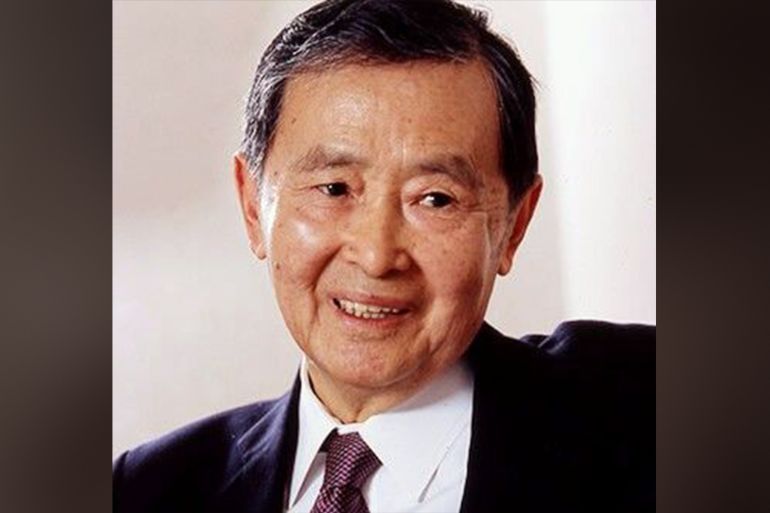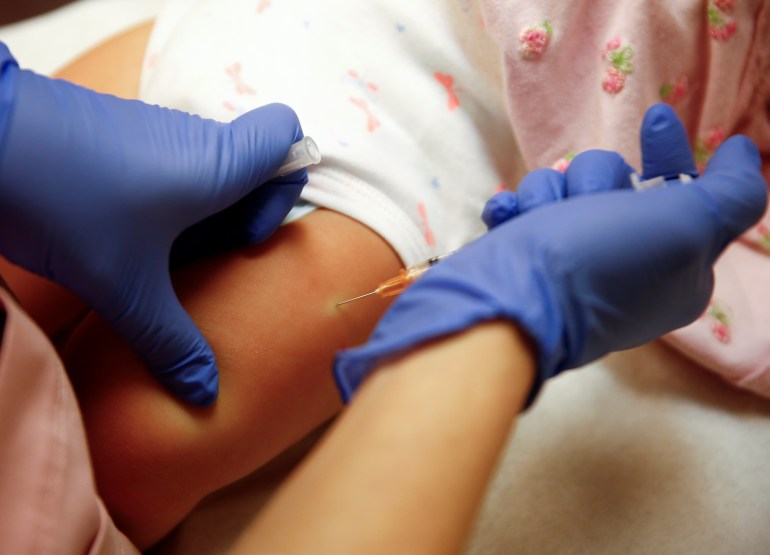Dr Michiaki Takahashi: Why Google honours him today
A look at the life and work of Michiaki Takahashi, the scientist that developed the chickenpox vaccine.

Japanese scientist Michiaki Takahashi, renowned for the development of the varicella vaccine, would have been 94 years old on February 17.
Takahashi, who died in 2013, is also recognised for his research on measles and polio vaccines.
Keep reading
list of 4 itemsAmid global polarisation, the pandemic agreement encourages cooperation
Sunak apologises after report finds UK government covered up blood scandal
Philippines plans vaccination drive as whooping cough outbreak claims lives
On Thursday, Google is changing its logo in 13 countries to a doodle, or illustration, in his honour. This is his story:
Early studies
Takahashi was born in 1928 in Osaka, Japan. He earned his medical degree from Osaka University in 1954.
Four years later, he became an assistant professor at the Research Institute for Microbial Disease of Osaka University. During this time, Dr Yoshiomi Okuno led the laboratory and played a leading role in researching and developing vaccines for measles, rubella and mumps.
In the research institute, Takahashi dedicated his time to studying measles and polio. In 1963, he moved to the United States with his wife and two children after accepting a research fellowship at Baylor College.
Chickenpox in his family
In 1964, his 3-year old son developed varicella after coming into contact with the daughter of a neighbouring family in Houston.
While the girl was with his family, Takahashi detected a “blister-like rash on the girl’s head”, he said in an interview published in 2011 in the Financial Times.
Takahashi recognised the symptoms, knowing it could be severe and that there was no treatment. His son developed severe symptoms, with vesicles over his entire body and a high fever.
“His symptoms progressed quickly and severely. His temperature shut up, and he began having trouble breathing,” Takahashi described. “All my wife and I could do was watch him day and night,” he recalled.
But with time, the symptoms improved, and his son recovered. After that, Takahashi became aware of the severity of varicella despite it being regarded as a mild illness.
“I realised then that I should use my knowledge of viruses to develop a chickenpox vaccine,” he told the Financial Times.
The scientist went back to Japan in 1965 and became involved in tumour virus research. Still, his interest in developing a chickenpox vaccine did not diminish, and he started his project in 1970.
Vaccine research
At the time, Takahashi started his research by culturing live but weakened varicella-zoster virus (VZV) in animal and human tissue. However, there were concerns about the vaccination leading to other health complications, resulting in strong opposition to the development of the treatment.
“At that time there was fear that the chickenpox virus might be linked to cancer so a vaccine could end up being carcinogenic,” he told the Financial Times.
However, Takahashi was convinced of the relevance of the treatment and continued his research. “Successful development of varicella vaccine will have large benefits,” he said according to ClinicalKey, a medical journal.
The varicella vaccine was developed by using the VZV isolated from the vesicular fluid of a child with typical varicella. That child’s family name was Oka, so the virus was named the Oka strain. Research continued and after safety studies concluded, clinal trials began.
The vaccine ‘fools the immune system’
A varicella vaccination campaign was conducted on 23 uninfected pediatric patients to prevent the spread of the infection. The results were positive, with no other cases detected among the vaccinated.
In 1974, a decade after his son contracted the disease, the Lancet published the findings demonstrating the safety and efficacy of the varicella Oka strain vaccine for the first time.
The report said that “no troublesome clinical reactions were noticed and the spread of varicella infection was prevented, with the exception of one severe case in an unvaccinated patient.”
The vaccine “fools the immune system into thinking it has seen this disease before”, said Dr Anne A Gershon, director of the Division of Pediatric Infectious diseases at Columbia University Center, as quoted by the New York Times in 2013.
“It’s the only vaccine successful against any of the human herpes viruses,” she added.
In 1984, use of the vaccine was approved by eight European countries. The next year, the World Health Organization (WHO) recognised that the Oka strain was the best strain for producing a varicella vaccine, and in 1986 Japan approved it as well. The US approved the treatment in 1995, the same year the WHO adopted mass vaccination against varicella.
On December 16, 2013, Takahashi died aged 85 in Osaka, with heart failure reported as the cause of the death.
